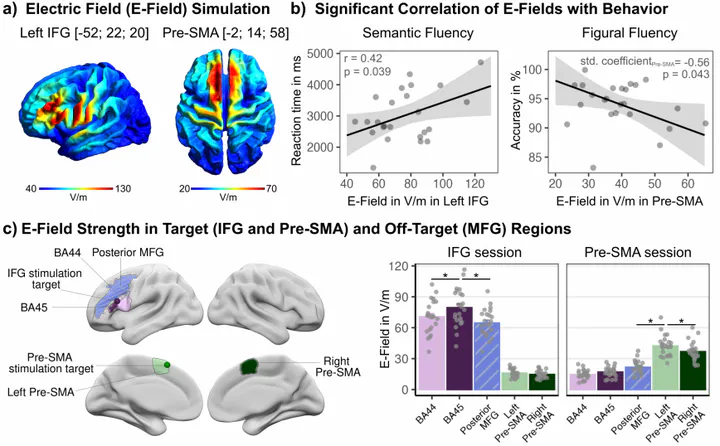Causal contributions of left inferior and medial frontal cortex to semantic and executive control

Abstract
Semantic control enables context-guided retrieval from memory, yet its distinction from domain-general executive control remains debated. We applied transcranial magnetic stimulation (TMS) to the left inferior frontal gyrus (IFG) and pre-supplementary motor area (pre-SMA) to probe their functional relevance for semantic and executive control. Across four sessions, 24 participants received repetitive TMS, followed by semantic fluency, figural fluency, and picture naming tasks. Stimulation of either region broadly disrupted both semantic and figural fluency, suggesting shared functionality. However, electric field modeling of the induced stimulation strength revealed distinct specializations: The left IFG was primarily associated with semantic control, affecting primarily verbal fluency, while the pre-SMA played a domain-general role in executive functions, affecting non-verbal fluency and cognitive flexibility. Notably, only dual-site TMS impaired accuracy in figural fluency, providing unique evidence for successful compensation of executive functions through either the left IFG or pre-SMA following single-site perturbation. These findings underscore the multidimensionality of cognitive control and suggest a flexible contribution of the IFG to control processes, either as semantic-specific or general executive resource. Furthermore, they highlight the tightly interconnected network of executive control subserved by the left IFG and pre-SMA, advancing our understanding of the neural basis of cognitive control.
Type
Publication
Communications Biology